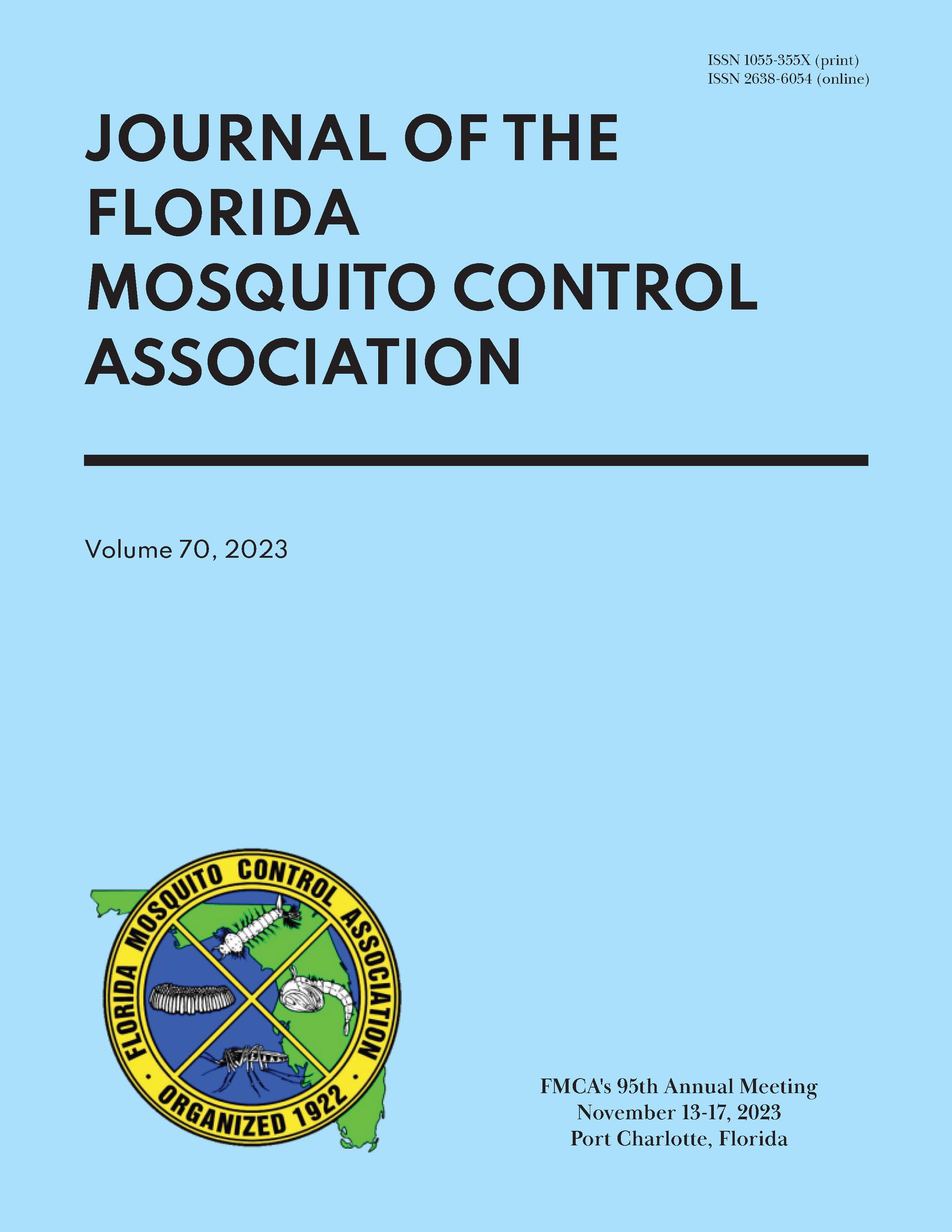ADULTICIDAL AND LARVICIDAL IMPACTS OF THE MIXTURE OF BACILLUS THURINGIENSIS ISRAELENSIS AND BORIC ACID TOXIC SUGAR BAIT (TSB) AGAINST AEDES AEGYPTI AND CULEX QUINQUEFASCIATUS
DOI:
https://doi.org/10.32473/jfmca.70.1.133967Palavras-chave:
Aedes aegypti, Culex quinquefasciatus, toxic sugar bait, dengue vector, Bacillus thuringiensis israelensis, boric acidResumo
Toxic sugar baits (TSBs) can be used to deliver insecticide material via ingestion instead of via contact through spraying of insecticides by targeting the resting and sugar-feeding behaviors of adult mosquitoes. This semi-field study aimed to evaluate the adulticidal and larvicidal dual action of a foliage spray of a TSB with a mixture of Bacillus thuringiensis israelensis (Bti), and boric acid against Aedes aegypti Puerto Rico (PR) strain (resistant) and Orlando (OR) strain (susceptible), and laboratory colony of Culex quinquefasciatus (Gainesville 1995 strain). The larval and adult evaluation of TSB consisted of 11% VectoBac (Valent Biosciences, Libertyville, IL; Bti), 5% boric acid, and 10% sucrose solution. The TSB intervention for adults consisted of the same as the larval intervention but had an addition of a food grade, 5g Blue No. 1 dye (Sigma Aldrich; St. Louis MO) to observe adult feeding. The controls received a 10% sucrose solution. For the larval mortality evaluation, the TSB was applied to the bromeliad with the runoff dripping into pans containing mosquito larvae. At 24 hours post-application, 100% larval mortality was observed. At all-time mortality recordings, 50 larvae were introduced into the larval pans and the bromeliads were sprayed with water to mimic rainfall allowing the remaining TSB to be washed off into the larval pans. After the 4th day of larval introductions, larval mortality was 83.5% ± 14.3 for Ae. aegypti_PR, 92.5% ± 6.1 for Ae. aegypti OR, and 97 % ±1.7 for Cx. quinquefasciatus. Total mean mortality at 72 hours post exposure for the adult TSB evaluation was 52.7% ± 24.2 for Ae. aegypti_PR, 34.3% ± 26.5 for Ae. aegypti_OR, and 73.7% ± 13.9 for Cx. quinquefasciatus. Our study suggests this TSB including Bti is effective against larvae when applied as an adulticide barrier application and could be a dual-action approach to mosquito control.

